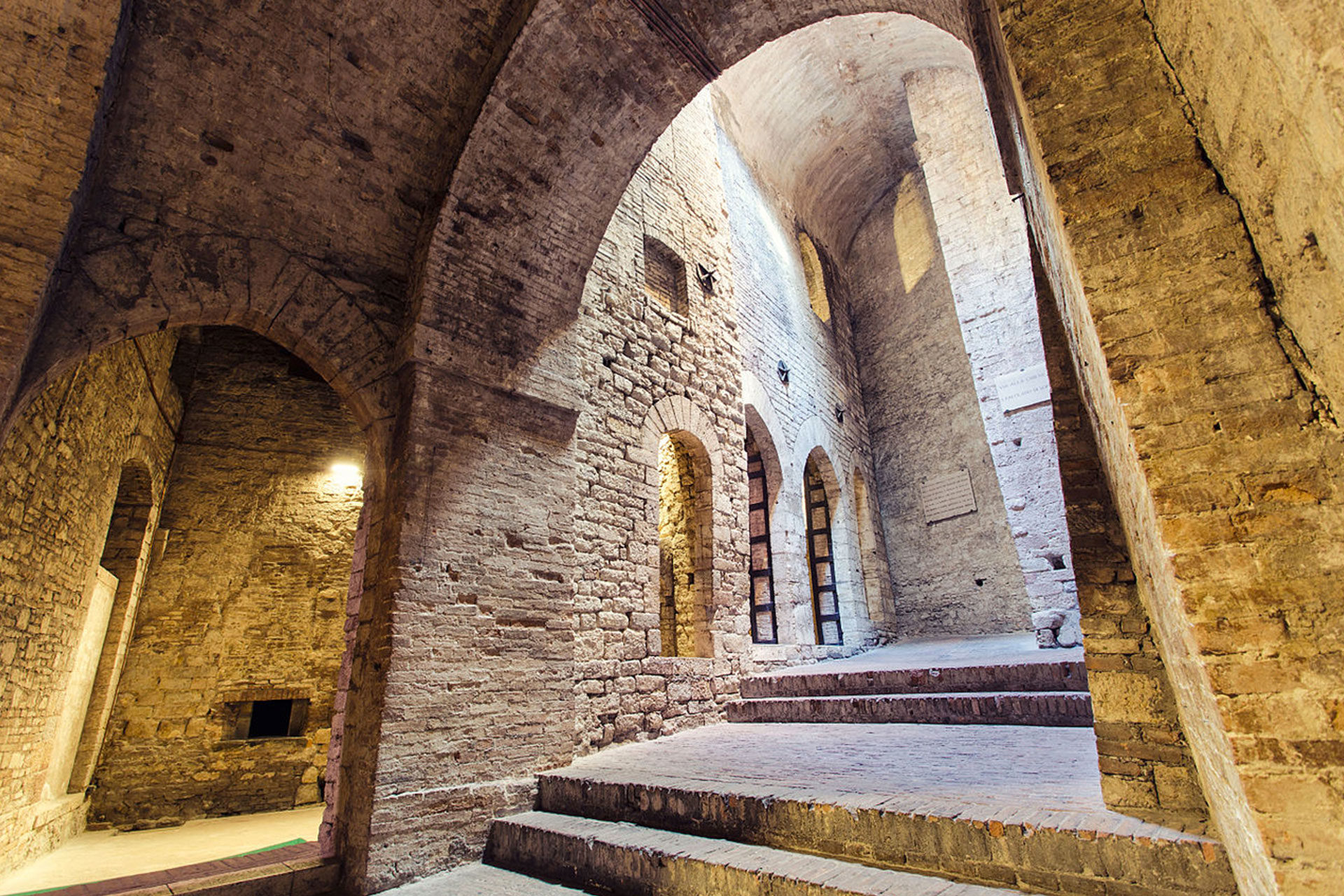The legends and stories handed down over the centuries contribute to the allure of the region of Umbria.
A number of especially remarkable and impressive legends are set in the region’s capital of Perugia in particular: we recount them here briefly, while always inviting you to come and discover them for yourself.
The Legend Of The Griffin Of Narni And Perugia
It is no coincidence that the emblem of both Perugia and Narni is the griffin, a mythological creature with the body of a lion and the head of an eagle.
The story goes, in fact, that during medieval times, a griffin roamed the countryside between the two towns, tormenting the inhabitants of the area with tremendous raids of the farmers’ livestock.
The people of Perugia and Narni therefore decided to put their historical rivalry aside and join forces get rid of the beast.
The enterprise was arduous but in the end the griffin was captured and each city got to keep a part of it as their trophy: Perugia took the skin and this is why the emblem is the white Griffin, while Narni took the skinned body and therefore their emblem is the red Griffin.
The Fontana Minore
One of Perugia’s most important and best known symbols is the Fontana Maggiore, however this precious monument is not the only one of its kind to feature in the centre of the Umbrian capital.
To complement it – even if the real reasons as to why it was built are not actually known – between 1277 and 1281 the Fontana Minore or Fontana degli Assetati later also known as Fontana del Grifo e del Leone was also built: the two famous bronze statures, now located in the atrium of the Palazzo dei Priori, were made by Arnolfo di Cambio specifically for the fountain that he was the creator of.
The monument was situated in via Mazzini and, possibly due to faulty operation, it was taken down as early as 1308.
In addition to the Griffin and the Lion of Palazzo dei Priori, some of its parts are kept at the Galleria Nazionale dell’Umbria: the marble statues of Assetata in ginocchio, Assetata con la brocca, Malato alla fonte, Scriba con libro and Scriba acefalo.
Winking Saint Constantius
According to tradition, on January 29th, the day of the Patron Saint of Perugia, Saint Constantius, all unmarried girls go to the church dedicated to this Saint to learn what their future holds.
In particular, if Saint Constantius winks at a girl, this means that she shall be married by the end of the year, otherwise the gentleman courting her shall console her by offering her a famous torcolo (traditional Umbrian cake).
It would seem that the light reflecting on the image of the Patron Saint makes it look like he is winking.
‘Il Conto’ , The Legend Of Corciano And Perugia
This legend of knights is linked to the story of the foundation of the city and is recounted in the Latin poem Eulistea, written by Bonifacio da Verona around 1293 commissioned by the municipality of Perugia.
It tells the story of Ulysses who come to Italy following the destruction of Troy.
He went up the Tiber river and stopped in a place called Colle Landone were he founded Perugia. Ulysses had several followers with him, including Coragino, a noble Trojan and his family.
Disputes developed between Ulysses and Coragino however, with the Trojan ending up leaving Perugia and founding Corciano nearby.
Some time later, Candida, Coragino’s daughter, married the Conte del Lago (The Count of the Lake), Novizio: from their union a child was born, Cornaletto, who became the young lord of Corciano.
One day Cornaletto challenged paladin Orlando to a duel, who accepted under the condition that if he won, Cornaletto would convert to Christianity and get baptised.
Orlando won and baptised Cornaletto also proclaiming him Knight to reward him for his bravery: this event, according to the Legend, was the beginning of the religious and civil history of Corciano.











Follow us on the socials